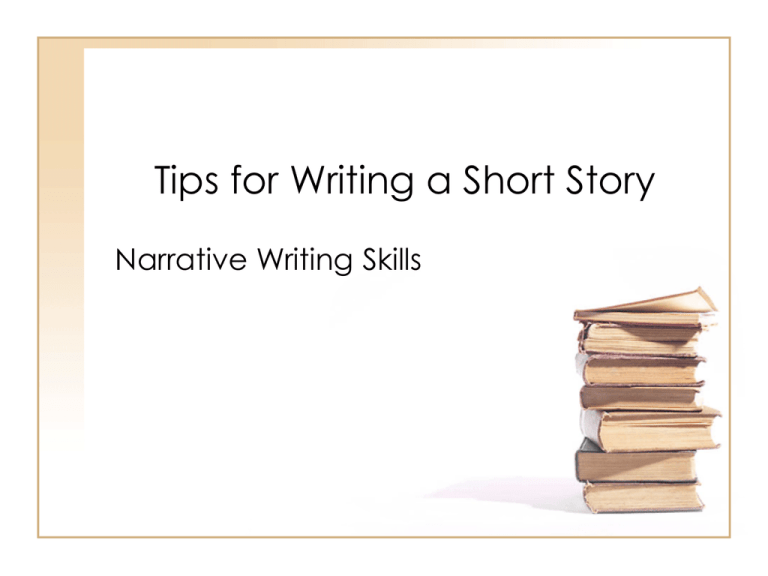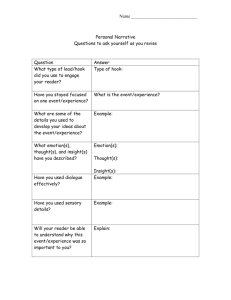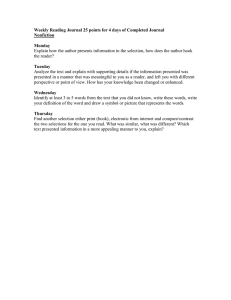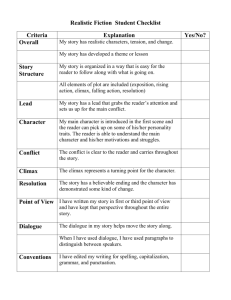Tips for Writing a Short Story Narrative Writing Skills
advertisement

Tips for Writing a Short Story Narrative Writing Skills The Basics of a Short Story Introduction Gives necessary background information by: Body •Introduces the conflict Conclusion •Resolves the conflict •Develops main characters •Tells the last event •Introducing characters •Tells a sequence of events •Describing the setting •Builds towards climax A Successful Short Story Should… • Use the elements of character, setting, and plot to develop the storyline • Use vivid language, concrete details, and dialogue • Develop and resolve a central conflict • Present a clear and logical sequence of events Before you Write: Things to Think About • Characters: Who is the main character? Who is the narrator? • Setting: What is the setting? How will this affect the plot? • Mood: Is your story funny, sad, dramatic? • Organization: What happens first, second, last? • Plot: What is the problem? Why did it occur? What will solve it? The First Step: A Catchy Hook • Just like a traditional essay starts with an attention grabber, your short story should start with a “hook” that engages your reader. • There are many different ways to “hook” your reader. Let’s look at a few ways with the handout “Little Red Riding Hooks”. • Now you try. Use one of the techniques we just discussed and write a catchy hook for your story. The Second Step: Developing Your Conflict • Your “body paragraphs” should continue to develop the characters you introduced in the beginning, and develop the central conflict. • Separate your events clearly into paragraphs (most likely in chronological order) The Final Step: Resolution • After you have developed your plot and characters, had your story reach a climax of events, and resolved major conflicts, you need a resolution • Make sure to resolve any conflicts, and don’t leave your reader asking “Then what?” Writing Tips: DO…. • Use vivid language. Don’t just tell the reader how angry your character is, show them by his/her thoughts and actions. • Use dialogue. Let the character’s words fit their personality. This is one of the few times when slang is ok. • Use description. Pay attention to the details you use to show the reader what is happening. • Use interesting adjectives & lively verbs Writing Tips: DON’T… • Change point of view in the middle of the story. Whether you write in firstperson or third person, stay consistent. • Be too wordy. Write clearly and concisely, and combine sentences to avoid repetition. • Use vocabulary you are unfamiliar with. A Final Note on Dialogue • If you use dialogue in your story, remember – Use quotation marks – Start a new paragraph each time you have a new speaker. Show vs. Tell Details • When writing a story, you always want to have for “show details” vs. “tell details.” • A “show detail” is a concrete example or detail that shows the reader what is happening, vs. simply telling them. • Use sensory details and specific examples as well as good diction. Show vs. Tell Details • “The man was distracted” (Tell detail). • “The man stumbled on the bottom stair as he frantically read the text message he just received” (Show detail). Now you try! • Write a short paragraph where use strong “show” details based on one of the following sentences: – The girl wore an interesting outfit. – It was an unbelievable game/concert. – I took the stage.



